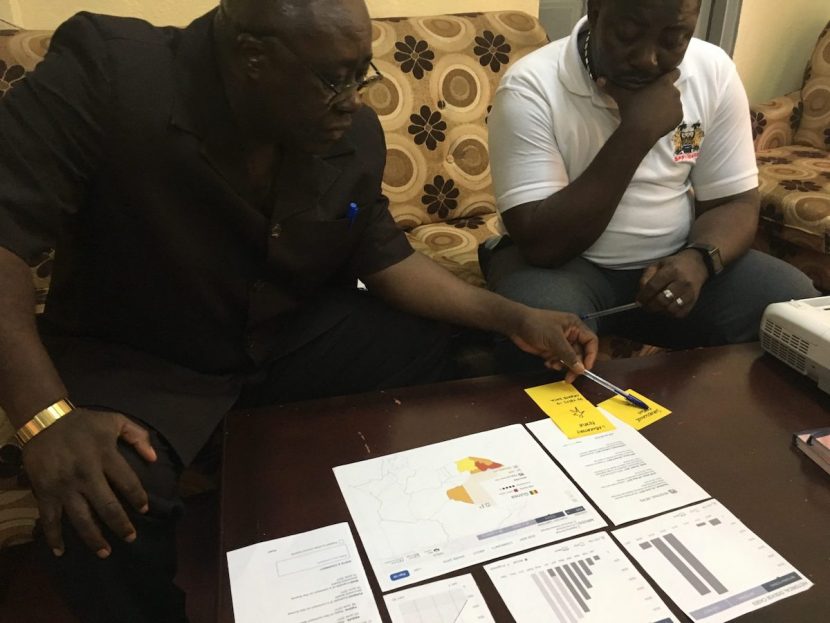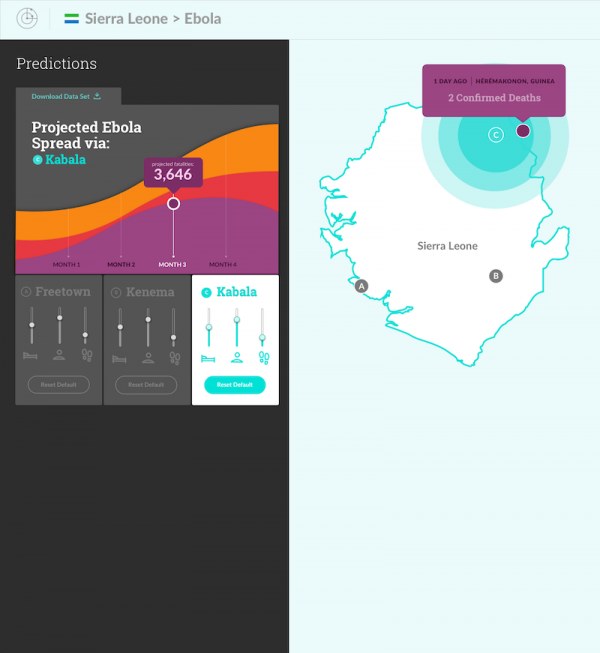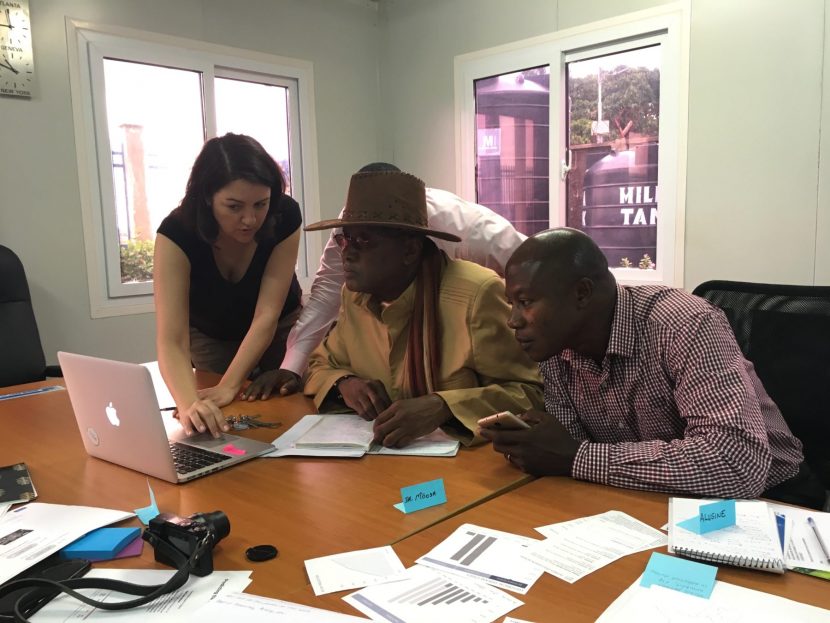disease prediction – west africa
Opportunity: One of the winners of the USAID funded Zika Grand Challenge program was a consortium of organizations dedicated to building a project called MRIIDS, Mapping the Risk of International Infectious Disease Spread. This project aimed to utilize a variety of global data sources to predict, in real-time, the risk of a major diseases spreading across borders, the way Ebola did.
Year: 2017
Role: Creative co-lead
Process: As the designated design support team for the Grand Challenge winners through Dalberg Design, my colleague and I were responsible for researching the tool’s concept and design in West Africa, where the consortium planned to pilot. After an initial phase of landscape research and interviews, we ultimately selected Sierra Leone and Senegal as our two research countries, given how they represented two different levels of sophistication and response during the Ebola crisis.
We then created prototypes of what the tool could look like, based on information from the consortium, and spent three weeks in Sierra Leone and Senegal working with the government, NGOs, and private sector organizations to fine-tune the tool’s audience, algorithm (data sources), UX, and UI. We also collected insights about the potential value of the tool as well as obstacles that the team would face if they chose to move forward with this project in its current form.
Outputs: We ultimately reported to the consortium that the lack of complete and timely health system data in West Africa was the biggest obstacle their tool would face by far, and that without offering a novel source of data beyond the ones they were looking at, their tool would be unable to provide accurate predictions of disease spread. We did, however, offer some suggestions for the novel sources of data, as well as suggestions on how to position the current platform plan as a data visualization tool, which research showed would be extremely useful to the target audience as well.
Our design support was so useful to the MRIIDS team that in 2018, they requested additional support from us. Even though my colleague and I were unable to fit the continuation into our schedules, the Dalberg Design team continued to support them, with my colleague and I playing advisory roles this time instead.


